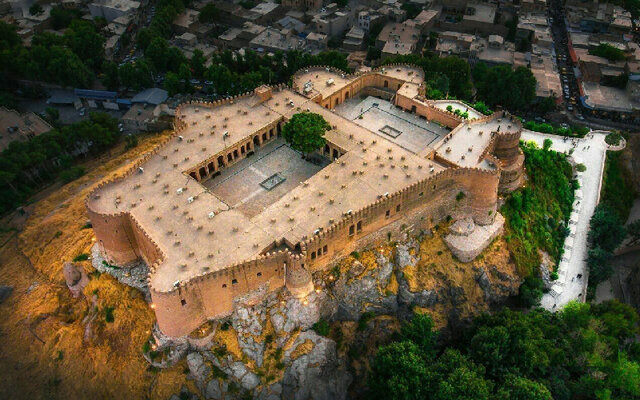Falak-ol-Aflak assumes qualities for UNESCO recognition, official says

TEHRAN - Falak-ol-Aflak Fortress (and its surrounding cultural landscape) possesses the necessary qualities for a possible recognition as a World Heritage site, Lorestan province’s tourism chief said on Wednesday.
The fortress and its environs (situated in Khorramabad, the capital of Lorestan province) possess all the key attributes required to capture UNESCO's attention and are interconnected in a chain-like fashion, Ata Hasanpour explained.
In a recent interview with ISNA, Hasanpour highlighted the unique architectural and urban planning characteristics of Khorramabad, which is renowned for its dual identity as both a "Garden City" and a "Water City."
He noted that at the heart of this city lies the formidable and historical Falak-ol-Aflak Fortress, also known as Shapur Khast. “In fact, this fortress is somewhat of a comprehensive cultural, natural, and historical package.”
"The Falak-ol-Aflak Fortress has been presented to UNESCO as a distinctive cultural product," Hasanpour stated, expressing hope that it would soon be inscribed on the UNESCO World Heritage List.“The surrounding environment of the fortress is equally remarkable, comprising a collection of prehistoric caves, the historic Khorramabad Valley, a river flowing through the city's center, and old bridges that encircle the eastern part of the fortress.” This valley, Hasanpour explained, serves as an ancient passageway, encapsulating a timeline of human life from the Stone Age to the present.
The unmissable eight-towered fortress dominates Khorramabad as one of the most visited travel destinations in the region for both domestic and foreign sightseers. The fortress seems particularly imposing and dramatic when floodlit at night, offering picturesque views of its encircling crenelated battlements.
Some experts believe that Falak-ol-Aflak is comparable with similar works in Naqsh-e Rostam, Naqsh-e Rajab, Tape Chugan, and Firuzabad in Fars province. In 2018, the UN cultural body added an ensemble of Sassanian historical cities in southern Iran -- titled “Sassanid Archaeological Landscape of Fars Region”-- to its World Heritage list. The ensemble comprises eight archaeological sites situated in three geographical parts of Firuzabad, Bishapur, and Sarvestan. It reflects the optimized utilization of natural topography and bears witness to the influence of Achaemenid and Parthian cultural traditions and Roman art, which later had a significant impact on the architecture and artistic styles of the Islamic era.
The Sassanid era is of very high importance in the history of Iran. Under the Sassanids, Persian art and architecture experienced a general renaissance. Architecture often took grandiose proportions, such as the palaces at Ctesiphon, Firuzabad, and Sarvestan, which are amongst the highlights of the ensemble. Crafts such as metalwork and gem engraving grew highly sophisticated, yet scholarship was encouraged by the state. In those years, works from both the East and West were translated into Pahlavi, the language of the Sassanians.
AM
Leave a Comment